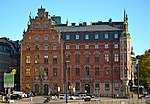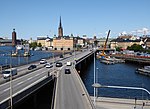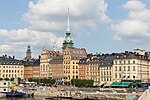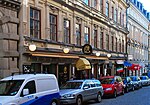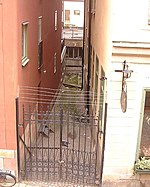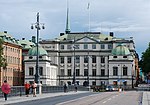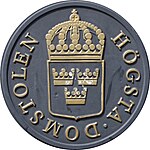Munkbron
Squares in StockholmStockholm County geography stubs

Munkbron (Swedish: "Monk's Bridge") is a public square on the western waterfront of Gamla stan, the old town in central Stockholm, Sweden. Connected to the square are Stora Gråmunkegränd, Gåsgränd, Lilla Nygatan, Yxsmedsgränd, and Munkbrogatan; while the traffic route Munkbroleden separates it from the canal Riddarholmskanalen. The square is divided into a northern and a southern part by the block Aurora in which the so-called Petersen House is found.
Excerpt from the Wikipedia article Munkbron (License: CC BY-SA 3.0, Authors, Images).Munkbron
Munkbron, Stockholm Gamla stan (Södermalms stadsdelsområde)
Geographical coordinates (GPS) Address Nearby Places Show on map
Geographical coordinates (GPS)
| Latitude | Longitude |
|---|---|
| N 59.324666666667 ° | E 18.066888888889 ° |
Address
Munkbron 11
111 28 Stockholm, Gamla stan (Södermalms stadsdelsområde)
Sweden
Open on Google Maps
